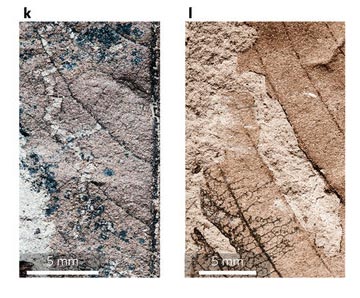Rapid Recovery of Patagonian Plant-Insect Associations Reported in New Scientific Paper
Research Suggests Southern Hemisphere a Relatively Safe Haven after End Cretaceous Impact Event
Life in much of the Southern Hemisphere seems to have recovered more quickly than ecosystems further north after the catastrophic Yucatan Peninsula impact event that marked the end of the Cretaceous.
Furthermore, the southern parts of our planet may have provided a biodiversity refuge after the Cretaceous/Palaeogene mass extinction. These are the conclusions drawn in a newly published scientific paper written by researchers based in the United States and Argentina.
Fossil Leaves and Insect Damage
The scientists, which included graduate student Michael Donovan and his supervisor, Professor Peter Wilf (Department of Geosciences, Pennsylvania State University), examined thousands of fossil leaves preserved in strata that represent the latest stage of the Cretaceous (Maastrichtian) and the earliest part of the Palaeocene (Danian). The fossils were examined under high magnification to identify traces of insect-feeding damage. From this data, the team were able to calculate how robust and diverse the ecosystem was at each point in deep time represented by the different stratigraphical layers.
An Analysis of Insect Feeding Damage on Fossil Leaves

Mining in a leaf. Initial serpentine phase packed with frass followed by a dramatic widening into a
blotch phase on leaf and b, close-up
of mine path in a.
Picture credit: Pennsylvania State University
Insect Damage on Leaves – A Measure of the Health of Terrestrial Food Chains
Biologists and botanists have used the number of plant/insect associations recorded in modern-day terrestrial ecosystems to assess the biodiversity of the food chain. These same principles can be applied to a study of fossil biota and as such, a study that looks at plant-insect associations across the K/Pg boundary can provide palaeontologists with a more complete understanding of how ecosystems coped and bounced back from a mass extinction event.
In an analysis of 3,646 fossil leaves from the latest Maastrichtian as well as from the Danian faunal stages preserved in strata located in Chubut Province, Patagonia (southern Argentina), the team concluded that it took approximately four million years for plant-insect associations to recover after the extraterrestrial impact event. Studies of insect-plant associations in strata of similar age but much closer to ground zero (western North America), indicate that it took at least nine million years for these associations to recover.
Insect Damage on Fossil Leaves from the Palaeocene
Picture credit: Pennsylvania State University
The picture above shows examples of Palaeocene fossil leaves with insect feeding damage. In photograph (k), skeletonised leaf tissue as a result of insect feeding is shown and (l) shows a portion of the leaf margin of Dryophyllum australis with feeding evidence along the margin. This new paper, published in the journal “Nature Ecology and Evolution” supports the emerging hypothesis that the impact of the extraterrestrial impact event on ecosystems was variable, particularly in the Southern Hemisphere.
Ecosystems in the Southern Hemisphere Recovered Faster
In general terms, in areas closer to the impact site, such as in western North America, little evidence has been found to support the idea that many different types of insect survived. However, ecosystems seem to have recovered much faster in South America. Studies of microscopic plankton and pollen have also provided evidence that life bounced back more quickly in the Southern Hemisphere than in the north. The palaeolatitude of the Chubut Province was around 50 degrees south, such locations may have provided a refuge for biota that could then migrate northwards as conditions improved.
Intriguingly, not all fossil sites in the Southern Hemisphere show signs of biota refuge status at the K/Pg boundary. In June of this year, Everything Dinosaur published an article on a study of the Upper Cretaceous rocks and Lower Palaeocene strata exposed on Seymour Island in the Antarctic. This research indicated that there was a dramatic and rapid extinction event in southernmost marine environments.
To read more about this study: Global Catastrophe Caused End Cretaceous Mass Extinction.
A spokesperson from Everything Dinosaur remarked that this new study could have important implications. Further research is needed to ascertain the global recovery rate. However, this study provided compelling evidence to indicate that some parts of the world recovered more quickly than others.
Visit Everything Dinosaur’s website: Everything Dinosaur.


